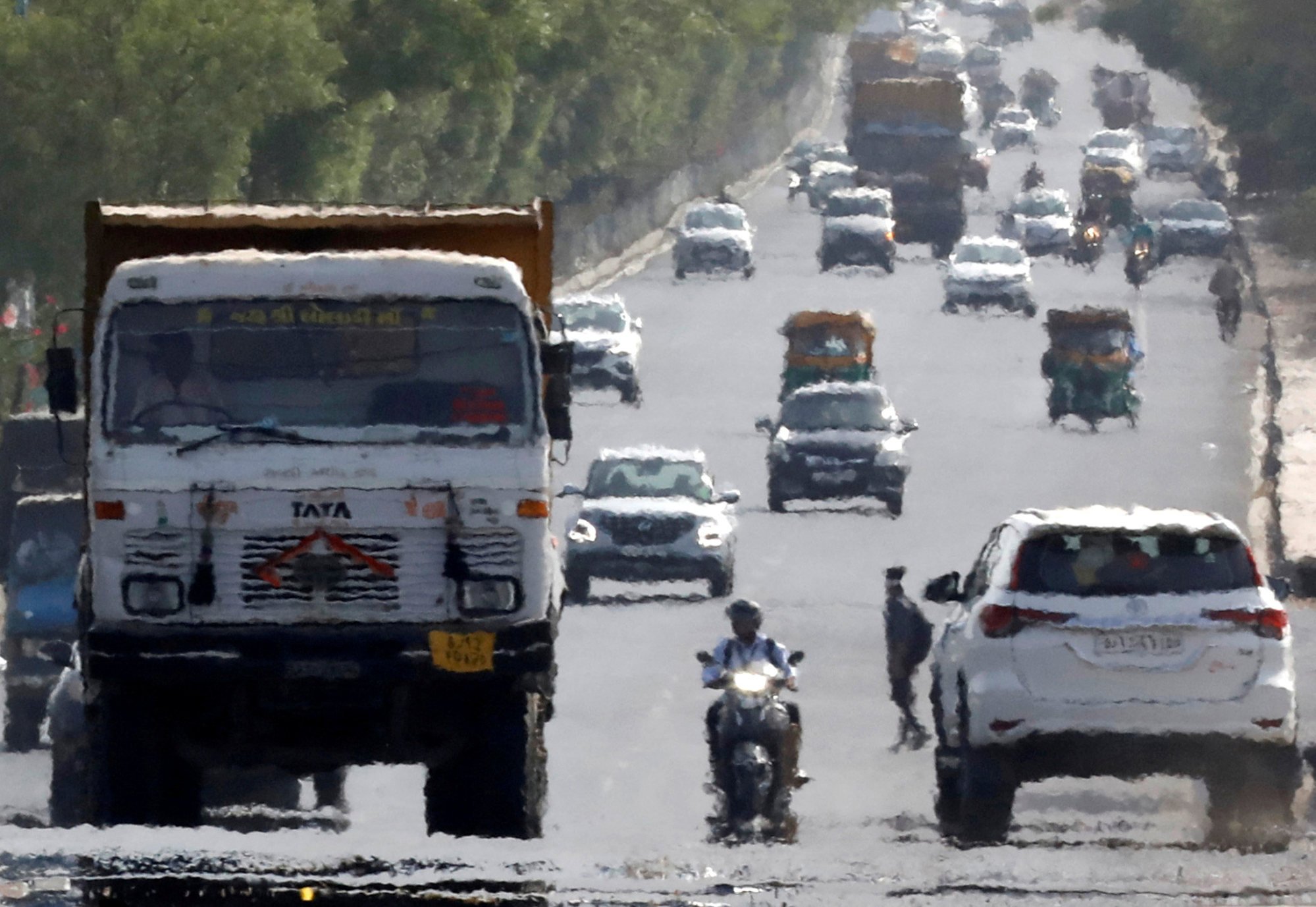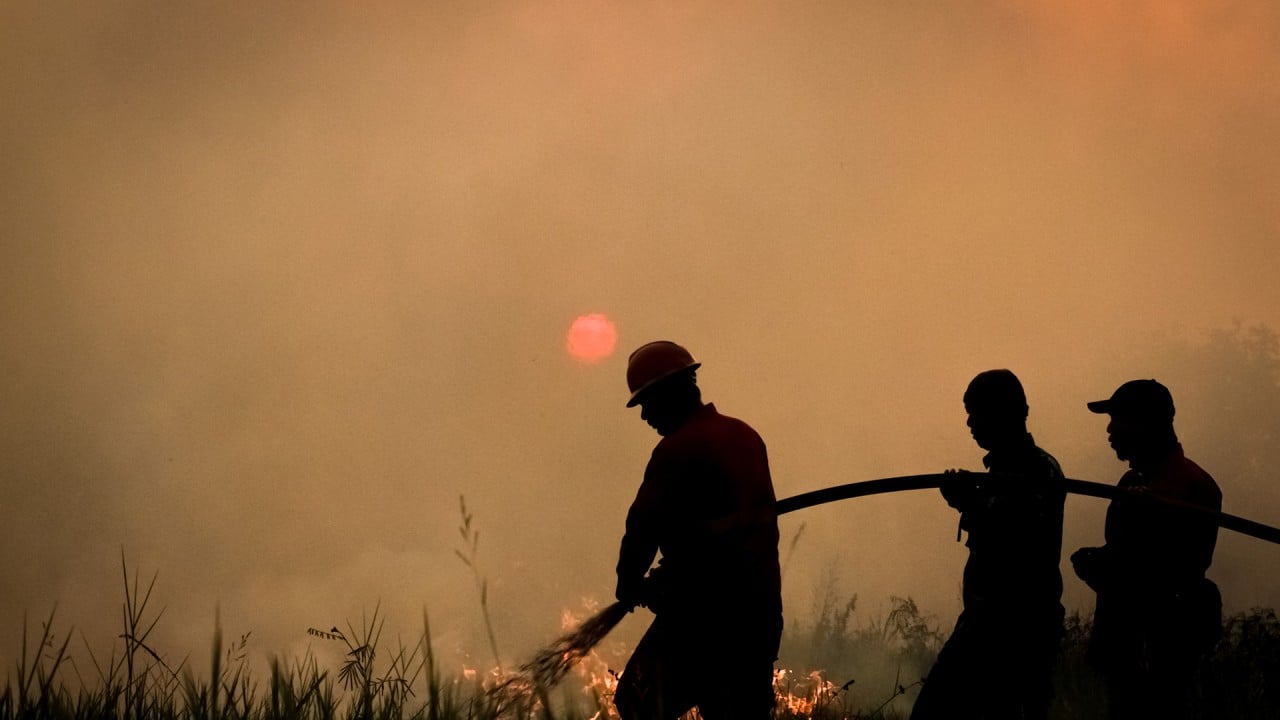
Asia set for supercharged heat as El Nino looms after ‘hottest April’ ever
- Record temperatures have left millions from India to Malaysia sweltering as children die from dehydration, fire alerts are issued and roads melt
- Heat stress threatens agriculture and is adding to water shortage concerns in the Philippines, while Indonesia fears a return of 2015’s killer haze
They were whipped into a fury by a climate pattern known as El Nino, which prolongs Indonesia’s dry season and diverts its seasonal rains – effects that are only made worse as the world warms and its climate changes.
“The fires were very damaging to Indonesia and its farmers,” said Krishnayanti, a farmer herself and the Indonesian Farmers Association’s international relations officer.
“This year, if El Nino comes, Indonesia needs to be seriously prepared because of the harm that could again happen to our forests and to the farmers.”
Already, meteorologists are warning of temperature records falling across Asia this year, as the region swelters under brutal heatwaves and is left reckoning with a future that could be too hot to handle.
Asia’s hottest April
It was the “hottest April in Asia” last month, said Dr Wang Jingyu, an assistant professor at the National Institute of Education in Singapore who researches climate modelling and land-atmosphere interaction.
He attributed the intense heat to the looming return of El Nino and its effects: reduced rainfall and increased temperatures.
The UN’s World Meteorological Organization on Wednesday forecast with 80 per cent certainty that the climate pattern would have emerged by October this year, adding there was a 60 per cent chance it could develop as soon as July.

Meanwhile, an 11-year-old boy in Malaysia died of heatstroke and dehydration last month amid high-temperature warnings across several districts as thermometer readings soared towards 40 degrees, with at least five other people needing medical treatment.

A heatwave of such magnitude cannot be explained by El Nino alone, according to Benjamin Horton, director of the Earth Observatory of Singapore at Nanyang Technological University.
“Something else is happening, too. The Earth is getting warmer, with significantly more moisture in the atmosphere,” he said, noting that naturally oscillating climate cycles had not been the sole cause of “the recent number of record-breaking extreme weather events”.
Human activities, including the burning of fossil fuels, deforestation and other land-use changes, have driven the climate crisis by releasing increased levels of greenhouse gases into the atmosphere that trap heat and warm the planet.
World needs peak emissions by 2025, deep cuts by 2030 to avoid climate disaster
The record-breaking heat has “disrupted crop production, imposed societal distress, and resulted in peak energy consumption,” Horton said.
Heat action plans
Nearly 26,000 people died in heatwaves across India between 1992 and 2020, according to World Meteorological Organization statistics. Recent years have seen an increase in the frequency, duration and intensity of heatwaves, which usually occur in the country from March to July.
This year, India’s weather office is predicting above-average temperatures and heatwaves until the end of May, as the prospect of further heat increases from El Nino also looms.
Yet many in the country, including officials, still lack the knowledge of how best to act in extreme heat, while data on heat-related mortality remains spotty at best, according to Dileep Mavalankar, director of the Gujarat-based Indian Institute of Public Health, Gandhinagar.
If El Nino disrupts India’s monsoon season … this will hugely impact agriculture and farming, and as a result, the economy
“The health department as well as the disaster-management authority, I think, have not thought through what the impacts might be to people if the heat worsens later this year,” he said.
“If El Nino disrupts India’s monsoon season, there will be a deficit of rain and, of course, this will hugely impact agriculture and farming, and, as a result, the economy.”
Mavalankar, who put together India’s first heat action plan for a city after discovering that 800 people had died in Ahmedabad following a particularly hot week in 2010, said that educating the public was of paramount importance.

His plan for Ahmedabad involved simple solutions such as telling people what to do in case of high temperatures and preparing medical systems to deal with heat emergencies, and resulted in a 30 per cent to 40 per cent drop in total mortality during peak heatwaves.
Water shortages
Concerns about water shortages in the coming months have been reverberating around the region, as high temperatures increase the likelihood of dry weather and drought.
The National Water Resources Board has responded with contingency plans to ramp up production, with modular treatment plans being commissioned and companies reactivating deep wells.

Thailand issued a warning last month urging the public to save water, as the Office of National Water Resources prepares for a drought that is also forecast to hit the neighbouring Malaysian states of Kedah, Kelantan and Perlis, bringing with it prolonged hot, dry conditions.
Meanwhile, the Royal Malaysian Air Force has been working with the country’s meteorological department to seed clouds over Penang in a bid to replenish the supply of water in the island’s drying dams.
Fighting fires
The extreme heat currently being felt in parts of Indonesia has not yet been classified as a heatwave, according to Dwikorita Karnawati, head of the country’s meteorological agency, who added that daily maximum temperatures had begun to decrease at the end of April.
She said the slash-and-burn methods that were often used to clear land in the country for farming would not be tolerated amid this year’s drier weather.
Government warnings in February exhorted farmers and plantation companies to be on their guard against fires in Sumatra and Kalimantan in the face of an El Nino event.
“We will need to be prepared for even the most extreme conditions,” government minister Luhut Pandjaitan wrote in a recent Instagram post, reflecting on the deadly fires of 2015.
Earth in hot water? Worries over sudden ocean warming spike
“I ask all [related agencies] to start preparing early, taking all the necessary steps required so that the bad experience from eight years ago does not repeat.”
Krishnayanti, from the Indonesian Farmers Association, said her greatest fear was that the reckless actions of a few irresponsible people might have dire consequences for everyone.
“The impacts of El Nino may be worsened by irresponsible companies or people that burn land carelessly,” she said. “Farmers must have the wisdom to survive during such difficult times.”
Additional reporting by Hadi Azmi



